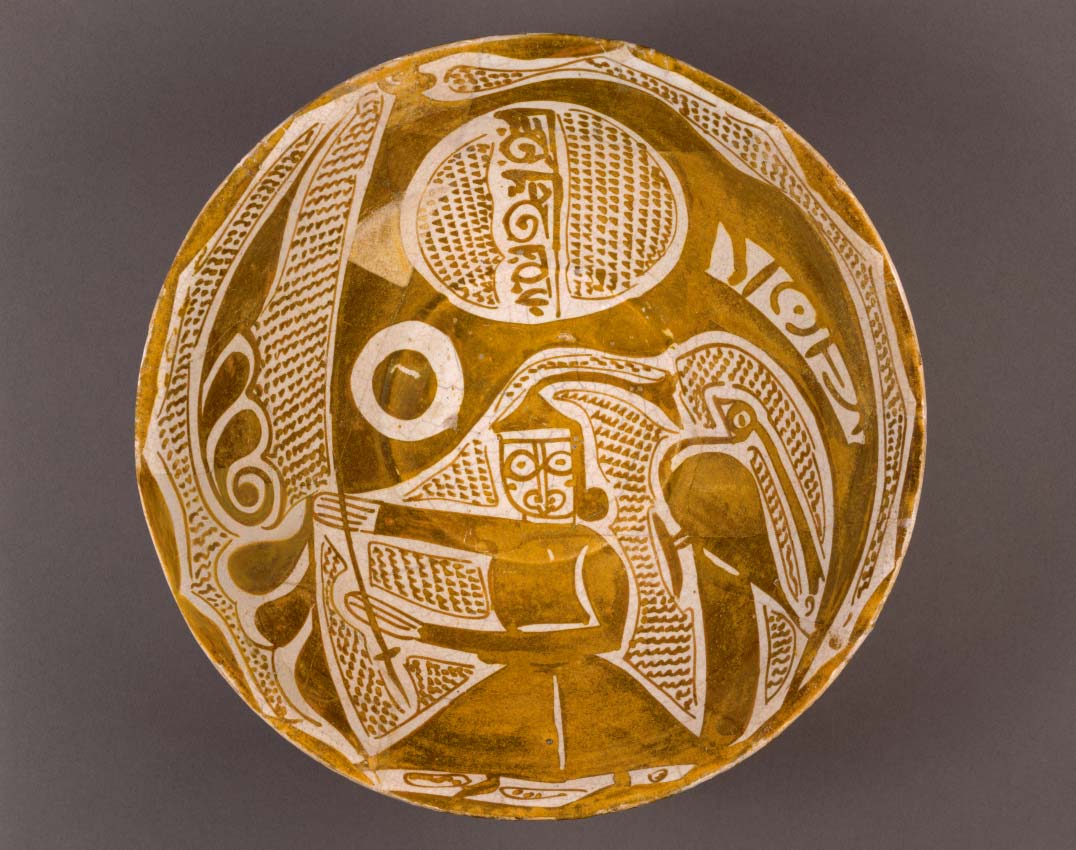Abbasid Bowl with Standard Bearer, 10th Century, Iraq
Louvre MAO 23

A larger image of this Abbasid Bowl with Standard Bearer, 10th Century, Iraq. Louvre MAO 23.
Image source

Standard-bearer bowl
10th century
Iraq
Ceramic, monochrome overglaze luster decoration
H. 9.8 cm; Diam. 31.7 cm
Gift of Michel Maurice-Bokanowski, 1949
MAO 23
This bowl is a fine example of the ceramics with monochrome luster decoration that were produced in Iraq in the 10th century. The decorative compositions of this period included figurative elements - in this case a standard-bearer, a court figure associated with the ruling power. Ceramics such as these were designed for an elite clientele. This object is one of the best known examples of Abbasid ceramics with figurative decoration painted in monochrome luster, a decorative technique developed by Abbasid potters in 9th-century Iraq. These items, which required considerable expertise and expense, were intended for an elite clientele. The decoration was painted with copper and silver metal oxides on a previously glazed and fired piece which was given a second firing in an oxidizing then reducing atmosphere (i.e. low in oxygen); this sparked a chemical reaction that allowed the metallic elements to penetrate and mix with the vitreous glaze. Seen from a certain angle, this kind of decoration creates an optical effect of changing colors with bright metallic reflections. The style of polychrome decoration developed in the 9th century was abandoned in the 10th in favor of monochrome decoration that tended toward monumentality and clarity of composition, and incorporated figurative elements for the first time. On this bowl, a standing frontal male figure holding a standard in both hands is treated in a stylized manner typical of the 10th century. A peacock is depicted in profile to the right, two vigorously drawn half palmettes to the left. The broad standard contains two lines of inscription; the words baraka (luck) and al-mulk (sovereignty) have been distinguished. The rim of the bowl is highlighted with a continuous garland. Under the base, three radiating brushstrokes inside a wide circular line are thought to be workshop marks. There are several known pieces of this type, some of which are decorated with military themes (warriors), while others depict banquet scenes (musicians, drinkers).
Source: Louvre. New link: Louvre MAO 23
Referenced as figure 343 in The military technology of classical Islam by D Nicolle
343. Ceramic bowl, 9th to 11th centuries AD, Iranian, Louvre, Paris (Pez).